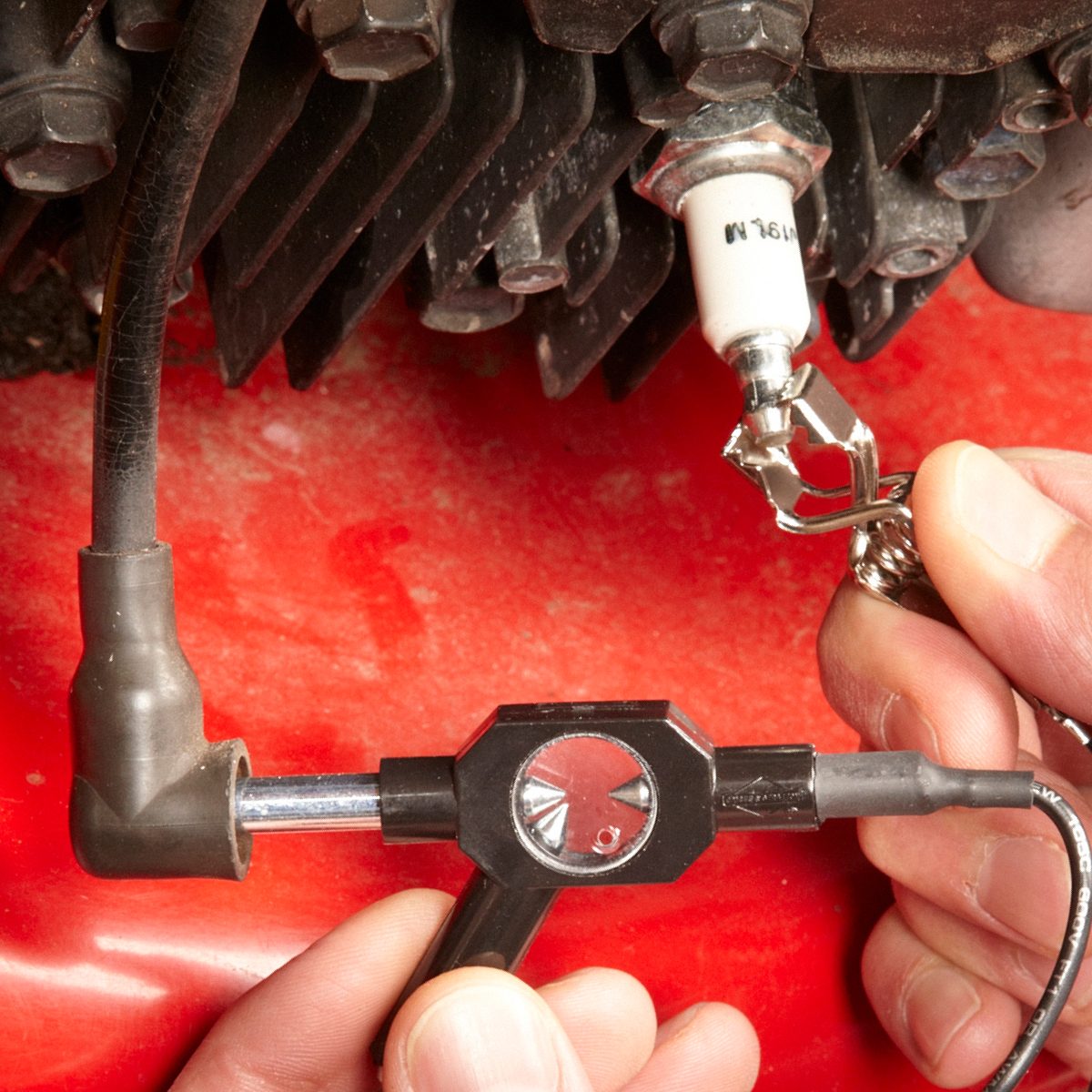Test the ignition coil quickly and easily with a simple ignition system tester
Introduction
Learn how testing the ignition coil can be quick and easy using a special ignition system tester. It's inexpensive and works for any small engine.
Project step-by-step (1)
An ignition coil takes voltage from the battery and multiplies it to create a spark at the spark plugs, which in turn ignites the engine. Cars have been using some form of the coil ignition system for more than 100 years, but they still go bad from time to time.
If your vehicle is misfiring, having trouble starting, backfiring or generally just not performing well, that could be a sign that your coil is not working properly. Other symptoms include poor fuel economy or rough idling, especially if that roughness is intermittent. If you suspect a faulty ignition coil, you’ll first need to test it.
“Testing ignition coils is a straightforward and fairly easy DIY,” says Aaron Turpen, an automotive expert at Car Talk. “The simplest method requires only a multimeter, which is not an expensive tool.”
But, if you don’t have a multimeter, here’s another way to test an ignition coil, with an ignition tester system. It’s inexpensive and works for any small engine.
Testing the Ignition Coil and Spark Plug
Most people think you can check a small engine’s ignition system by removing the spark plug and grounding it while cranking the engine and watching for a spark. Nope. That just confirms that the spark plug fires in open air. It doesn’t mean the ignition coil is strong enough to fire the plug when under full compression.
Here’s a better ignition coil test.
Buy an inexpensive ignition system tester then connect the tester between the spark plug boot and the engine. Watch for a spark in the tester window as you pull the starter cord. To test the operation of both the ignition coil and the spark plug, connect the tester between the spark plug boot and the spark plug. Then start the engine and watch the tester window. A spark plug misfire will immediately be evident in the tester window.
“A spark plug misfire happens when the spark plug is either not producing spark during the ignition portion of the engine’s stroke or it is producing it too early or too late in the process,” says Turpen.
You can use the tester on any small engine (mower, snow blower, chain saw, string trimmer, etc.).

FAQs
What are symptoms of a bad ignition coil?
They’re similar to the symptoms of bad spark plugs, including an engine that’s having trouble starting, has diminished power or misfires under acceleration. “Thankfully, a bad ignition coil will trigger your check engine light, which is why a code reader is such a handy tool for DIYers to have in their arsenal,” says Duane “Doc” Watson, a technical trainer at Bosch Mobility Aftermarket.
Is it safe to drive with a bad ignition coil?
No. You risk damaging your engine and having it shut down, which is a serious safety issue.
“Engine misfires, which are a very common problem with bad ignition coils, will cause massive damage to your catalytic converter, which can be a major expense to repair,” says Watson. “If you have to drive it, drive it to a repair shop.”
About the Experts
- Aaron Turpen is an automotive expert at Car Talk, and a prolific automotive writer.
- Duane “Doc” Watson is a technical trainer at Bosch Mobility Aftermarket. He has more than 45 years of experience in automotive repair, has trained thousands of technicians and earned many industry awards, including Chevrolet Technician of the Year and Buick Service Master of the Year.




















